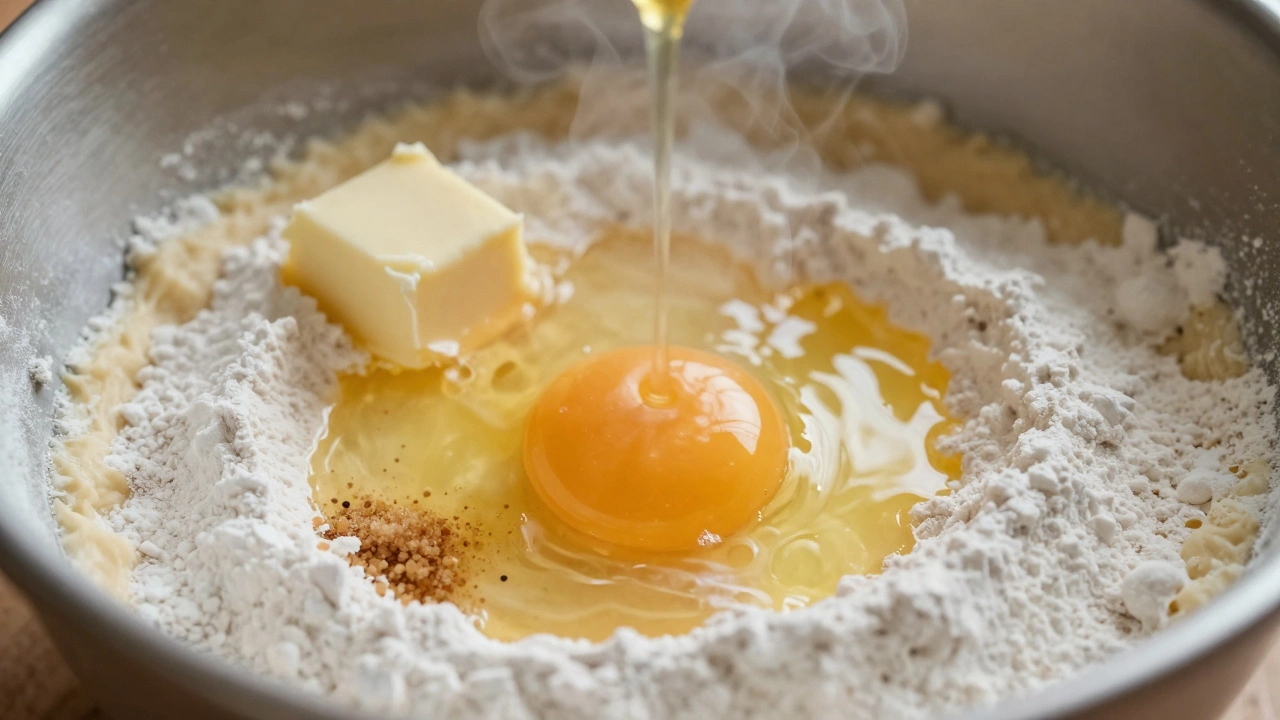
What Makes Cookies Crunchy or Soft? The Science Behind Perfect Texture
Discover the science behind why homemade cookies turn out crunchy or soft. Learn how sugar, fat, flour, and baking temperature control texture for perfect results every time.
Ever wonder why some cookies turn out dry while others stay melt‑in‑your‑mouth soft? The secret is usually in the ingredient choices. Below you’ll find the basics you need, plus a few optional add‑ins that can take your cookies from good to great.
Flour is the backbone. All‑purpose flour works for most cookies, but switching to cake flour gives a softer crumb because it has less protein. If you want a crunchier bite, try a little whole‑wheat flour or a blend with bread flour.
Sugar does more than sweeten. White granulated sugar spreads and makes cookies crisp, while brown sugar adds moisture and a caramel flavor that keeps them chewy. A mix of both often gives the best balance.
Fat determines texture and flavor. Butter adds rich taste and a tender crumb; melt it for a chewier result, or keep it cold and cut it into the dough for a lighter, crisper cookie. Shortening or coconut oil can also be used, especially if you need a dairy‑free option.
Eggs bind the dough and add moisture. One large egg is enough for most small‑batch recipes. For extra chewiness, try using just the yolk, or replace an egg with a tablespoon of applesauce for a lower‑fat version.
Leavening agents like baking soda and baking powder create lift. Baking soda reacts with acidic ingredients (brown sugar, chocolate, or molasses) and spreads the cookie, while baking powder gives a puffier texture.
Once you have the basics down, it’s time to have fun. Vanilla extract is a classic; just a teaspoon can brighten the whole batch. Spices such as cinnamon, nutmeg, or espresso powder add depth without extra calories.
For texture, toss in nuts, oats, or shredded coconut. They add crunch and make the cookie feel heartier. If you love chocolate, fold in chips, chunks, or even a swirl of Nutella.
Don’t forget salt. A pinch of flaky sea salt on top of baked cookies amplifies sweetness and adds a satisfying snap.
Remember, the ratio matters. A typical cookie formula is 2 parts flour, 1 part sugar, and 1 part fat, with a touch of liquid (egg) and leavening. Adjust the ratios a little to get your desired texture, but keep the balance so flavors stay in harmony.
Experiment with one change at a time—swap brown sugar for white, or try cake flour instead of all‑purpose. Keep notes of what you used and how the cookies turned out. That way you’ll quickly learn which ingredient combos work best for your taste.
With these basics, you can bake any cookie style—soft oatmeal, crisp sugar, chewy chocolate chip, or even gluten‑free versions. The right ingredients make the difference, and now you have a simple roadmap to choose them.

Discover the science behind why homemade cookies turn out crunchy or soft. Learn how sugar, fat, flour, and baking temperature control texture for perfect results every time.

Unlock the secrets to perfect homemade cookies with these seven key ingredients. From flour to butter and everything in between, discover what makes cookies chewy, crispy, or soft. Learn interesting facts and handy tips to elevate your cookie-baking game to new heights. Find out the essential role each ingredient plays and how slight tweaks can create a delightful variety of textures and flavors. Get ready to impress with your next batch of scrumptious homemade cookies.